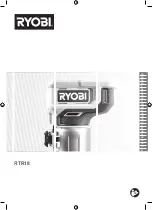
EMS i-MO 200-S Series Hardware Installation Guide
Version
2.0
ELECTRONIC MEDIA SERVICES LIMITED
PASSFIELD BUSINESS CENTRE, LYNCHBOROUGH ROAD, LIPHOOK, HAMPSHIRE, GU30 7SB, UK
Tel:
01428 751655 |
Fax:
01428 751654 |
E-mail:
Page
17
of
20
If any part of the antenna system should come in contact with a power line,
don’t touch it or try to remove it
yourself. Call your local power company. They will remove it safely. If an accident should occur with the
power lines call for qualified emergency help immediately.
Choosing a Mounting Location
The location of the antenna is important. Objects such as metal columns, walls, etc. will reduce efficiency.
Best performance is achieved when antennas are mounted at the same height and in a direct line of sight
with no obstructions. If this is not possible and reception is poor, you should try different mounting positions
to optimize reception.
The antenna is designed to create an omni-directional broadcast pattern. To achieve this pattern, the
antenna should be mounted clear of any obstructions to the sides of the radiating element. If the mounting
location is on the side of a building or tower, the antenna pattern will be degraded on the building or tower
side.
Before attempting to install your antenna, think where you can best place the antenna for safety and
performance. Install your antenna at about 8 to 10 feet above the ground and away from all power lines and
obstructions.
Mounting the Antennas
The antennas should be mounted externally and as high as possible but ensure they are clear of any power
lines. The antennas should be spaced about 1 metre apart. The antenna is vertically polarized. Since the
antenna has vertical gain, it is very important to mount the antenna in a vertical (not leaning) position for
optimal performance.
Connecting the External Antennas to the i-MO
The connector on each 3G aerial cable should be attached to the aerial sockets by means of the screw
threads as shown below.
Note
:
Connectors should be touch tight only! Do not over tighten.




































